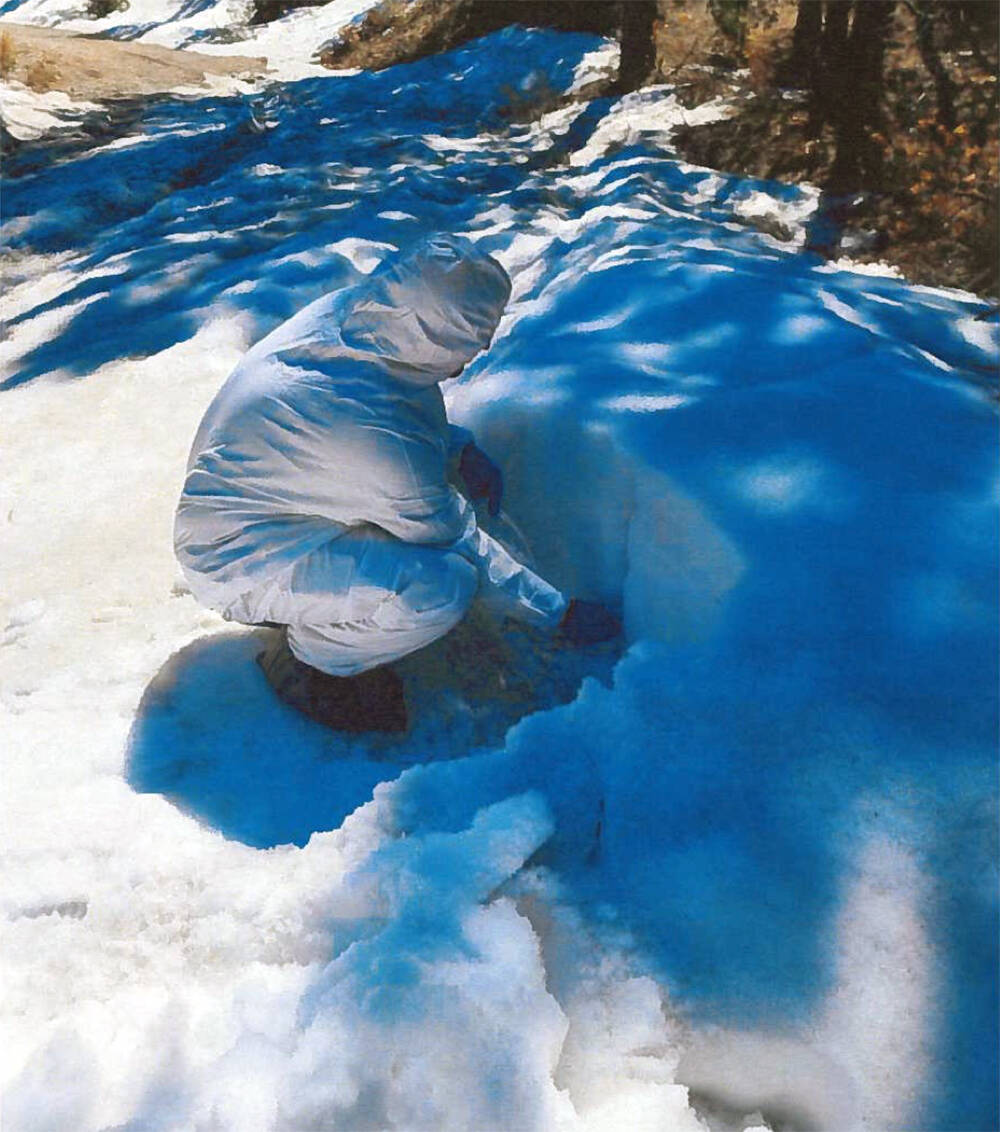How this cloud-seeding program is having a measurable impact in the valley
Nevada is the driest state in the nation and though cloud-seeding is by no means a one-answer solution for managing its strained water resources, this process is having a measurable impact around the state, including right here in the Pahrump Valley.
Nye County Water District General Manager Dann Weeks recently went before the Nye County Commission to give an update on the district’s cloud-seeding program, funds for which were allocated from the Nye County American Rescue Plan Act grant program. Weeks reported that over the last 12 months of the local cloud-seeding program, the Spring Mountains saw an additional 6,653 acre feet of “snow water equivalent”.
“This presentation is concerning a program that I feel is instrumental in the water district’s course,” Weeks told commissioners during their Oct. 17 meeting. “The cloud-seeding program is a four-year program that was funded through ARPA funds. We’ve gotten through the first year and with significant results. I am not a scientist or a hydrologist, however, the data does indicate that we generated upward of 6,000 acre-feet of water on the mountain through the program this year, which was beyond my expectations.”
Weeks emphasized that the type of cloud-seeding the water district is focused on generates snow, rather than rain. “We only seed when the conditions are right for snowpack. So this program does not contribute to rain precipitation or in any way lead to the kind of flooding we’ve had recently,” he noted.
When the snowpack on the Spring Mountains melts, it will make its way into Basin #162. This basin is Pahrump’s sole-source aquifer, providing all of the water that is used by residents and businesses in the valley. The basin’s annual recharge, estimated by the Nevada Division of Water Resources at 20,000 acre-feet, comes exclusively from this snowpack. Every inch of snow above and beyond the forecast total for any given storm results in more melt, meaning more water to sustain the valley.
The cloud-seeding presentation outlined the scope of the program, which is being undertaken through a partnership with the Desert Research Institute, or DRI. Four generators have been placed at strategic locations, two on the valley floor, one on Mt. Potosi and the fourth in Lovell Canyon. When conditions are right, burners are ignited, which then disperse silver iodide into the atmosphere. These tiny particles of silver iodide give water droplets a place to converge and form ice crystals.
“Every snowflake you’ve seen has initially formed this way - a small speck of dust or pollen floating around the atmosphere collects freezing drops of water, forming the intricate designs that we’re familiar with,” information from the DRI details. “The only difference between cloud-seeding and natural precipitation is that instead of dust or pollen, the nucleus of the ice crystal is a tiny particle of silver iodide that scientists released into the cloud.”
Weeks said the hope is that the results of the water district’s cloud-seeding effort will eventually reflect in the its Water Level Monitioring Program, which has been used to track local water level trends over the last 18 years.
“It’s been a fabulous project,” Nye County Water District Governing Board Chair Helene Williams, who spearheaded the effort to secure ARPA funding for the program, told commissioners as the presentation drew to a close. “Thank you again for your support.”
As to the safety of cloud-seeding, the DRI assures that the process is not harmful to the environment.
“The silver used in cloud-seeding is silver iodide, which can be confused with other molecular forms of silver,” the DRI reports. “When silver is isolated as an ion, it is biologically active, meaning it interacts with bacterial or fungal cell walls… Silver ion can be hazardous in aquatic environments because it can also interact with proteins and other parts of cell membranes, but silver iodide, not silver ion, is used for seeding clouds. Silver iodide retains its form in water and does not break down into the potentially toxic silver ion. When the silver iodide particle falls to the ground with rain or snow, it separates from the water molecules that formed an ice crystal around it, essentially becoming a speck of dust no different from the silver naturally occurring in the soil.”
Contact reporter Robin Hebrock at rhebrock@pvtimes.com
Water board public workshop scheduled
The Nye County Water District Governing Board's next meeting is scheduled for Tuesday, Nov. 14 and will include a public workshop which members of the community are encouraged to attend.
"At that time, we'll be accepting ideas, concerns, criticisms and from those comments we will generate a report that will be made available to you (the Nye County Commission) and to the members of the water board to used as a resource to spin-up new programs, new agenda items and concepts," water district general manager Dann Weeks announced. "The water district is always trying to keep one foot forward. We want to be ahead of the problems and we want to be responding, not reacting. So the public's input is not only necessary, it's welcome. We really want the public there and we want their input. We need their input."
The meeting and public workshop will begin at 10 a.m. on Nov. 14 inside the Nye County Commissioners' Chambers, 2100 E. Walt Williams Drive. Residents can also participate from Tonopah at 101 Radar Road or Beatty at 426 "C" Avenue South.
The agenda for the meeting will be posted on Thursday, Nov. 9 and can be viewed by visiting NyeCountyNV.gov


















